B2B Branding: A Complete Guide
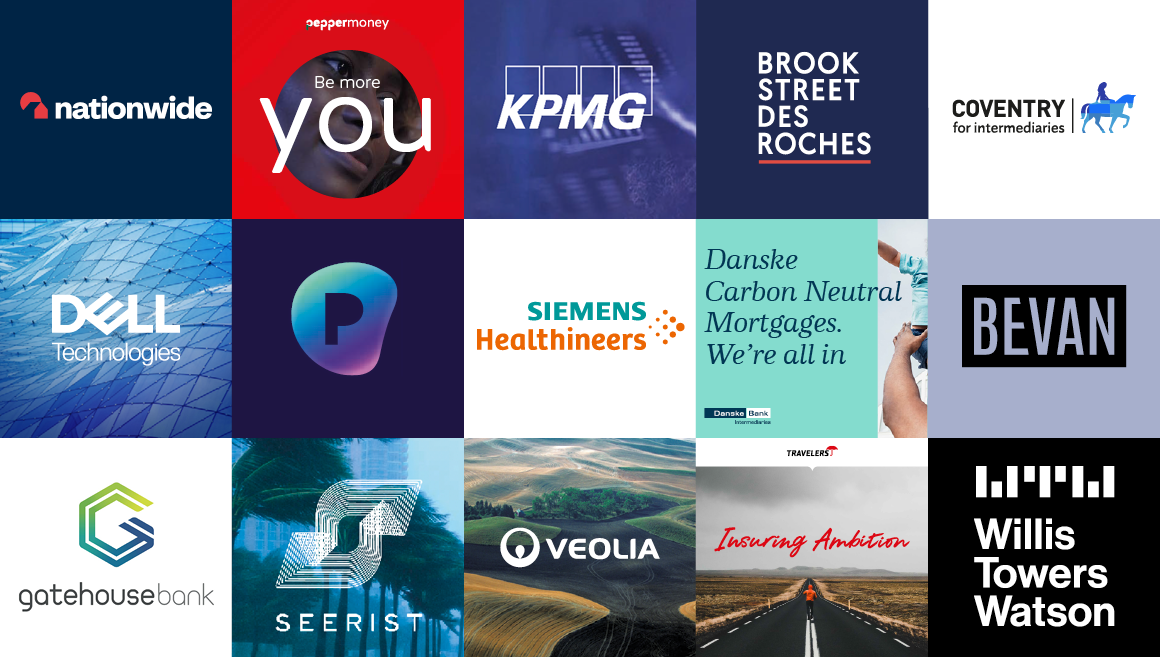
Branding is key to the success of any B2B organisation. Stripped to its essence, it’s about defining a clear and compelling positioning – and bringing it to life so a brand gets noticed, is remembered, and resonates in the minds of the audience. A strong brand will distinguish a company from its competitors. Increase familiarity, trust and liking. Ensure future demand, and ultimately drive growth.
This guide is written with ambitious B2B marketing leaders and practitioners in mind. Those looking to create and maintain thriving brands over the long-term – in markets where differentiation is challenging and competition is fierce. It’s designed to equip you with know-how, insight, and a better understanding of how to build a successful B2B brand.
What is B2B branding?
Business-to-business or B2B branding describes the strategies and practices a company adopts to create a distinctive and compelling identity – specifically targeting other businesses rather than individual consumers. The goal of B2B branding is to make it easier for an organisation to sell and for its customers to buy.
This is achieved through creating a brand identity that is distinctive and memorable. And then developing and consistently communicating a proposition that is meaningfully different to competitors. We think of effective B2B branding as a good story, well told.
The key elements of B2B branding include:
Brand Positioning:
Bringing absolute clarity and focus to how the brand is perceived in the minds of the target audience, relative to competitors.
Value Proposition:
Clearly articulating how and why a brand’s offering better meets the needs of its target audience than any alternative.
Brand Values and Personality:
Clearly defining the principles that drive behaviour, and the particular characteristics of the brand that should be expressed.
Brand Identity:
The verbal and visual assets that bring the brand to life and reflect the brand positioning. This includes everything from the brand name and external narrative, to straplines, logos, colours and typography.
Campaigns and Communications:
Amplifying and reinforcing the brand positioning. Maintaining a consistent brand message and image across all channels, platforms and collateral.
Customer Experience:
Ensuring a consistent and positive experience across all touchpoints, from initial contact to after-sales support. This includes sales interactions, customer service, and product or service delivery.
Reputation Management:
Actively managing and monitoring the brand’s reputation through customer feedback, and reviews. Addressing any issues that arise promptly and effectively.
Employee Advocacy:
Encouraging and empowering employees to represent and promote the brand positively, both internally and externally. Branding is an inside-out process. Fully engaged employees are often the most effective brand ambassadors.
Brand Evolution:
Continuously evaluating and evolving the brand to stay relevant in the market, adapt to changes, and meet the evolving needs of the target audience.
How is B2B branding different from B2C?
The fundamentals of branding differ relatively little between B2B and B2C. The core objectives – expressing difference, being distinctive, shaping perceptions, being memorable, building trust, and so on – are the same, as is the approach to creating a strong brand.
There are still some key distinctions, however:
- Target Audience
B2B branding targets businesses, organisations, or institutions. Decision-makers include multiple stakeholders – like managers, executives and procurement teams. It focuses on building long-term relationships and trust with other businesses.
B2C branding targets individual consumers. Decision-making is typically personal and influenced by emotional factors. Aims to create immediate appeal and drive consumer purchases.
- Decision-Making Process
B2B branding decision-making is often complex, involving detailed analysis, multiple approvals, and longer sales cycles. There’s an emphasis on rational and logical factors such as ROI, efficiency, and business benefits. Relationships and reputation play a significant role in purchasing decisions.
B2C branding decision-making is usually quicker and more impulsive. It’s influenced by emotional appeals, brand loyalty, and personal preferences. And focuses on immediate needs, desires, and experiences.
- Marketing and Communication Strategies
B2B branding utilises targeted and personalised marketing approaches, like account-based marketing or direct sales. Channels include industry publications, trade shows, webinars, whitepapers, and LinkedIn. Content is often educational, informative, and focused on industry-specific challenges and solutions.
B2C branding employs mass marketing strategies to reach a wide audience – think TV ads, or social media campaigns. Channels include mainstream media, social media platforms, retail environments, and influencer partnerships.
How B2B branding has evolved
B2B has long been behind the curve with respect to the understanding the importance of branding, but it is catching up. Encouragingly, these days when in early conversations with prospective clients we tend to hear less of this…
“We’re completely different from our competitors…’ Then, in the same breath…’We should probably be using blue, because that’s the main colour of most of our competitors’
The desire to conform and fit in is a natural instinct, but we are seeing more B2B brands recognising that long-term sustainable success can demand stepping outside comfort zones when presenting your organisation to the world.
This evolution in B2B ties in with a general shift towards wider acknowledgement that business-to business is still people-to-people. Something we at mark-making* talk and write at length about as part of a perspective on successful B2B brand building we call B2B More Human.
The implications of a more human-centric approach to B2B branding include:
- Greater focus on speaking to problems solved as opposed to mindlessly presenting extensive features and product details.
- Leaning into the appeal of authenticity and imperfection and how that makes brands more relatable and in turn likeable and memorable.
- Balancing the short-term tactical and more rational communications and campaigns, with the longer-term, more emotively-led brand-building activity.
- Being braver with an increased willingness to express difference and be distinctive, and achieving this through more creativity.
Why B2B branding is important
B2B branding is vital for driving sustainable long-term business growth. It plays a pivotal role in establishing and maintaining a company’s position in the market, and building strong customer relationships. Find out how making your B2B more human can help your business grow.
How a strong B2B brand can give you a competitive advantage
Most B2B brands are operating in highly-competitive spaces where there is little to separate one brand from another in terms of core offering. Features are often very similar, and in turn the benefits much the same. There are two key ways in which a strong B2B brand delivers competitive advantage.
To consistently be the brand of choice in any market, whether in B2C or B2B, two criteria must be met, as illustrated below.
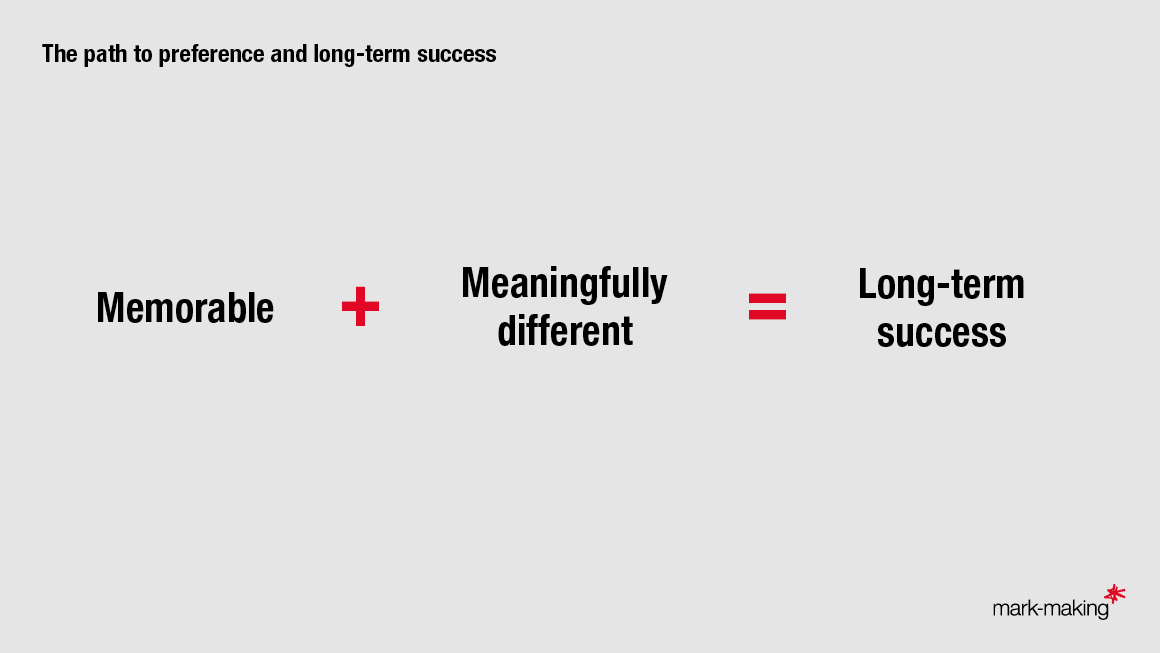
In any purchase situation a brand must first come to mind. That may be through mental availability (memories) or physical availability (literally being there in front of you/accessible). Also known as brand salience, it is this that puts your brand in the running for being bought.
Being in the running, or ‘consideration set’, is tough for any brand. But, in B2B where typically just a tiny fraction of your brand’s target market is ready to buy at any given time, the challenge is compounded. So, a strong B2B brand, or more specifically brand identity, is essential – it delivers competitive advantage by getting you noticed and remembered.
Other key advantages delivered by B2B branding include:
- Trust and credibility: a well-established brand builds both with clients and stakeholders
- Perceived value: a strong B2B brand can command premium pricing
- Customer loyalty and retention: which translates into repeat business and reduces the risk of losing clients
- Attracting talent and partnerships: a reputable B2B brand not only attracts clients but also top talent and strategic partnerships
- Resilience to market fluctuations: brands with an established reputation and loyal customer base provide stability and resilience
The importance of brand strategy for B2B organisations
Building a strong brand is critical to long-term business success, a brand strategy is essential. Without a clearly defined brand strategy, brands are missing possibly the single greatest opportunity for long-term competitive advantage.
With a clear brand strategy, companies can more effectively enter new markets, launch new products, and expand their reach. It provides a roadmap for scaling the business while maintaining brand integrity.
Key components of B2B branding / process
Building a strong brand isn’t rocket science, but it does require discipline and commitment. In the simplest of terms it’s about creating a compelling story and telling it brilliantly well – so well, in fact, that others will want to tell it for you.
Over the best part of 30 years, we have developed a three-phase methodology to achieve just that: Define, Articulate, Amplify.
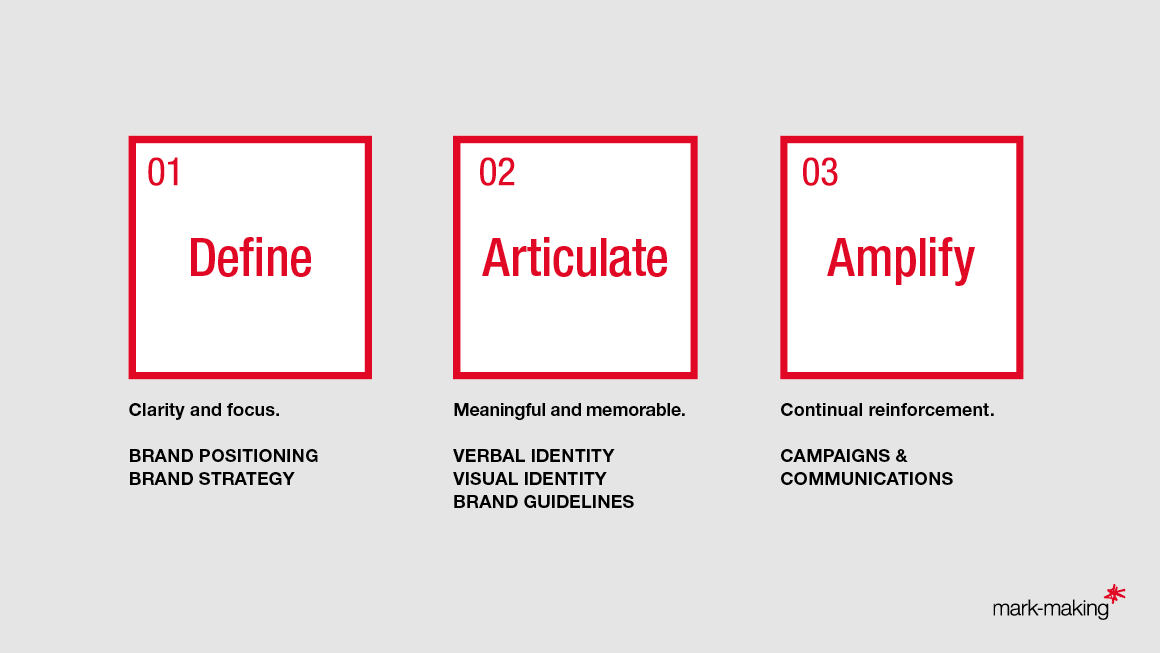
Define
Without strong foundations no brand will thrive over the long term. The objective of the Define stage is to bring absolute clarity and focus to your brand positioning and strategy. Or, in other words, your brand story.
The first task is to gather the necessary insight. Understanding your customer is always the starting point. Whether that is purely desk research, qualitative or quantitative, the scope and nature of this activity will be determined by ambition and budget. And of course, the more robust the better.
Then we take this learning and shape a brand positioning that is compelling, differentiated, authentic and sustainable. Typically a messaging matrix that may include a purpose, mission statement or customer promise, underpinned by a clear substantiation in the form of ‘reasons to believe’, brand values and a well-defined brand personality.
Articulate
The Articulate phase is about bringing your brand positioning to life. Creating the verbal and visual assets that tell your B2B brand story in both a meaningful (reflective of what your brand stands for) and memorable way (to build all-important brand salience).
The core elements of your B2B verbal identity will typically include a brand narrative, a ‘line’ that captures the essence of your brand, and tone of voice principles that ensure anyone writing or speaking on behalf of your brand is able to do so consistently and confidently.
Your B2B visual identity will comprise all the essential elements of an effective design language, from logo and colour palette, to typography, imagery, and everything works together to ensure your brand is distinctive, true to what you stand for, and unforgettable.
Your B2B brand guidelines, as a static document or in dynamic digital form, serve to bring all these core assets, and the positioning elements they reflect, together in a single practical resource.
Amplify
With these robust foundations in place, the Amplify phase is about perpetual reinforcement – strengthening and amplifying your B2B brand positioning.
From internal communications and campaigns that ensure an aligned culture, to ongoing integrated external activity, every interaction and touchpoint represents an opportunity to further solidify your B2B branding.
Challenges of B2B branding
B2B branding presents several unique challenges. Here are some of the more common ones:
- Complex decision-making processes. B2B purchases often involve multiple stakeholders with different priorities. Aligning your brand messaging to resonate with these different decision-makers can be challenging
- Longer sales cycles. B2B sales cycles tend to be longer and more complex than B2C. Therefore building and maintaining interest and engagement requires consistent and targeted branding and marketing
- Relationship-driven sales. B2B transactions rely heavily on relationships and trust. Establishing and nurturing these relationships through more human branding can take time and effort.
- Brand perception vs. reality. Consistently delivering on your brand promises and maintaining a positive customer experience is critical
- Differentiation in a crowded market. Articulating and demonstrating your unique value proposition is essential.
Navigating these challenges requires a branding partner who understands your business, and your customers. That’s where we can help.
Do you need to refresh or rebrand?
Typically the brand identity briefs we encounter are presented as rebrand projects. In reality, the vast majority would be better described as brand identity refreshes.
The difference between a B2B brand identity refresh and a rebrand
A refresh focuses predominantly on the brand identity, that is, how the brand is reflected and articulated through a particular blend of verbal, visual and other sensory assets. The same story, better told. There may be work required to bring greater clarity and focus to the brand’s positioning, but the general positioning territory – the mental space you want to occupy in the mind of your customer – should be fundamentally the same.
With a rebrand, the brand’s positioning has changed. In other words, what you want your audience to think when they think of your brand is no longer what it was. And, as a natural consequence, how you express that positioning, your brand identity, is no longer fit for purpose. The requirement is a new story, well told.
When to refresh a B2B brand identity
A refresh is typically sparked by the recognition that a brand’s identity is coming up short in one of two ways. It is either insufficiently meaningful, or not memorable enough. Often, it’s a combination of both.
From the perspective of being meaningful, it may be that the original identity never truly reflected the brand’s positioning and what it stands for. Or, it could simply be that over time, the way the brand looks and sounds has gradually become less focused, consistent and coherent.
If your brand has reached the point of becoming what we call a ‘bland’, or is in danger of heading that way, then it’s unlikely to be memorable. A robust review and potential refresh of your identity makes strategic and commercial sense.
The most proactive B2B brands review their brand identities from a position of strength – making gains from perpetual evolution and fine-tuning of how they present themselves to the world.
When to rebrand
A positioning change may be caused by a number of factors. From a strategic redirection such as targeting an entirely new audience, to evolving competitive landscape or wider cultural shifts beyond anyone’s control. If you’re unsure whether you need an identity refresh or a rebrand, these simple questions can help.
- Is your proposition compelling to your target audiences?
- Is your positioning differentiated?
- Is your story authentic?
- And is it sustainable?
If the answer’s ‘no’ to some or all of these questions, you should consider rebranding.
An objective review of your brand’s positioning and identity should be a regular, non-negotiable part of your marketing strategy – even when business is booming. By staying on the front foot you can at least be confident you’re not letting complacency compromise future success.
Examples of B2B branding
Below you’ll find examples of good B2B branding – some from us, and some from the wider marketplace. All of them show how it’s possible to make a B2B brand thrive, through insight and creativity.
What makes B2B brands thrive?
At mark-making*, we do this through an approach called B2B More HumanTM – a practical framework for building (and maintaining) a flourishing B2B brand. It consists of four key principles:
- People before product. Only by truly understanding your audience can you deliver meaningful solutions to real problems. That way, you can present products, services or tools as solutions to human problems. And that makes them interesting.
- Keep it real. CEOs now speak from bedrooms, as well as boardrooms. Meetings are paused by Amazon doorbells and pets pop up for unannounced cameos. What can B2B brands learn from this? If an audience that ‘feels’ you will always be more likely to part with their pennies. And if you keep on being authentic, they’ll keep on investing in you.
- Head and heart. Because we’re human, we mainly make decisions based on emotion. But we’ll always rationalise these decisions afterwards. B2B brands need to capture both their audience’s heads and their hearts – first with an emotive story that creates desire, and then with the factual bones that seal the deal.
- Dare to be different. The B2B sector is blighted by ‘blanding’. When ‘bland’ sets the tone, it takes bravery to stand apart. The great news is that bravery is what people want. The best B2B marketing doesn’t just educate, it entertains. Because when somebody’s entertained, they remember you.
B2B Branding examples from mark-making*
The following examples are from our own portfolio. They may not be household names, but they’re each punching way above their weight. Many are market leaders in their own spaces – and all show considered and consistent application of the principles highlighted above.
Link – a much needed rebrand
Outsourced marketing firm Asian Sourcing Link (ASL) faced the challenge of repositioning itself in an industry known for environmentally harmful merchandise. To achieve this, mark-making* conducted a discovery phase, revealing themes around sustainability, relationships, trust, and expertise.
This led to the creation of a new positioning, ‘the positive-change partner’. And ultimately, changing the name of the company to ‘Link’ – symbolising collaboration and connection, while retaining the company’s heritage.
Since the rebrand, Link has experienced significant growth, with a 50% increase in their LinkedIn audience and a 22% engagement rate. The new website has attracted 14,063 users, a 22% increase from the previous site.
“mark-making* were strong enough to ask some difficult questions in terms of what we tell our clients, what we believe and where we want to go. Everyone in the business is delighted with the outcome of the new brand – it has really re-positioned us for the business have worked hard to become today and the business we want to continue to be in the future.”
Steve Pomeroy, Link
Seerist – differentiation in a crowded market
In the competitive realm of threat intelligence, Seerist are a beacon of innovation and positivity amidst the prevalent narratives of crisis and fear. The challenge was to differentiate them in a saturated market by crafting a brand story that highlighted the brand’s unique capabilities.
Through extensive consultation with stakeholders and clients, we helped Seerist identify a strategic opportunity: to empower decision-makers with proactive insights that transform risk into opportunity. This positive brand positioning was reinforced by a vibrant visual identity, featuring a distinctive ‘S’ logo symbolising continuous feedback and dynamic intelligence flow.
Since the rebrand, Seerist has forged new client partnerships and exceeded initial targets. Internally, the brand has unified teams under a shared purpose, fostering a culture of innovation and collaboration.
Gatehouse Bank – expanding beyond a niche market
Gatehouse Bank – a UK institution specialising in Shariah-compliant financial products – faced the challenge of expanding its appeal beyond its traditional customer base.
The strategic rebranding focused on Shariah banking’s values of fairness, transparency, and responsible investment. The brand promise, “Choice & opportunity,” resonated widely, appealing not only to Muslims seeking ethical banking but also to a broader audience looking for alternatives to mainstream offerings.
Visually, the rebrand emphasised inclusivity with a modernised logo and a colour palette blending Islamic green with corporate blue, symbolising the convergence of East and West.
Today, Gatehouse Bank stands as the fastest-growing Shariah-compliant bank in the UK, boasting £1 billion in financed assets and strong profitability, a testament to its successful brand transformation and strategic focus on values-driven banking.
“The new identity expresses our distinctly different proposition with clarity and conviction. We are delighted with the work and confident in the role it will play in delivering our ambitious growth plans.”
Charles Haresnape. CEO, Gatehouse Bank
Best-in-class B2B Branding examples
The examples below are not from the mark-making* portfolio. What they do all have in common is their effectiveness. Successful B2B branding combines a clear value proposition, consistent messaging and strong visual identity – and always focuses on building relationships with customers.
IBM – continually staying relevant
IBM has successfully transformed its brand over the years, to stay relevant in the ever-evolving tech landscape. The company’s branding focuses on innovation, reliability, and trustworthiness – appealing to large enterprises looking for robust and secure technology solutions. They focus on the following key elements:
- Consistent Messaging: IBM’s branding emphasises “building a smarter planet,” highlighting their commitment to solving complex global issues with technology
- Thought Leadership: IBM positions itself as a leader in the tech industry through extensive research, white papers, and the IBM Research division
- Visual Identity: IBM maintains a professional and modern visual identity, including a recognizable logo and consistent use of colours and fonts across all platforms.
Salesforce – growth through collaboration
Salesforce is known for its customer-centric approach and strong emphasis on community and collaboration. Their branding reflects their mission to help businesses grow by improving customer relationships. Key themes include:
- Community Building: Salesforce has created a robust community of users and partners through events like Dreamforce, fostering a sense of belonging and collaboration
- Innovative Image: The brand is associated with cutting-edge cloud technology and continuous innovation, appealing to businesses looking for forward-thinking solutions
- Engaging Content: Salesforce uses content, such as blogs, webinars, and success stories, to demonstrate their value proposition and thought leadership.
Slack – success through simplicity
Slack’s branding focuses on simplicity, productivity, and connectivity – appealing to businesses looking for effective communication tools. The brand’s playful and approachable image differentiates it from more traditional enterprise software companies. This is done through:
- User-Friendly Design: Slack’s branding emphasises ease of use and accessibility, reflected in its clean, intuitive interface and straightforward messaging
- Relatable Tone: The brand uses a conversational and friendly tone in its communications, making it more appealing to a wide range of business users
- Strong Visual Identity: Slack’s distinctive logo, vibrant colour palette, and consistent visual style create a recognizable and memorable brand presence.
HubSpot – supportive and educational
HubSpot’s branding centres on the concept of inbound marketing, providing businesses with the tools and knowledge to attract, engage, and delight customers. Their focus on education and support has built a loyal customer base. Three key learnings from Hubspot’s success:
- Educational Content: HubSpot offers a wealth of free resources, including blogs, ebooks, webinars and the HubSpot Academy – the brand positions itself as a trusted authority in marketing, sales, and customer service
- Customer Success: The brand highlights customer success stories and testimonials, showcasing the real-world impact of their solutions
- Integrated Platform: HubSpot’s branding emphasises the seamless integration of its tools – promoting an all-in-one solution for customers.
How mark-making* can help
Wherever stage you’re at in your B2B Branding journey, mark-making* can help you get to where you want to be. With over 25 years’ hands-on experience of helping B2B brands connect with people, we know how to build a B2B brand with a human touch. If you’d like your brand to build more lasting relationships with your customers, let’s talk.
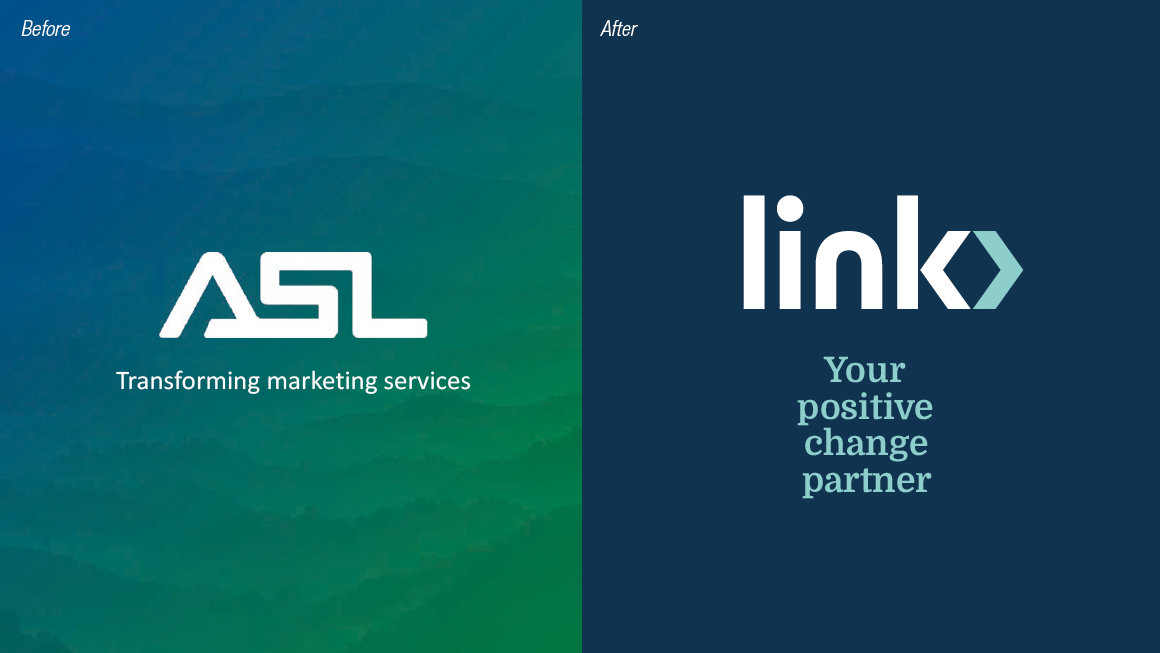
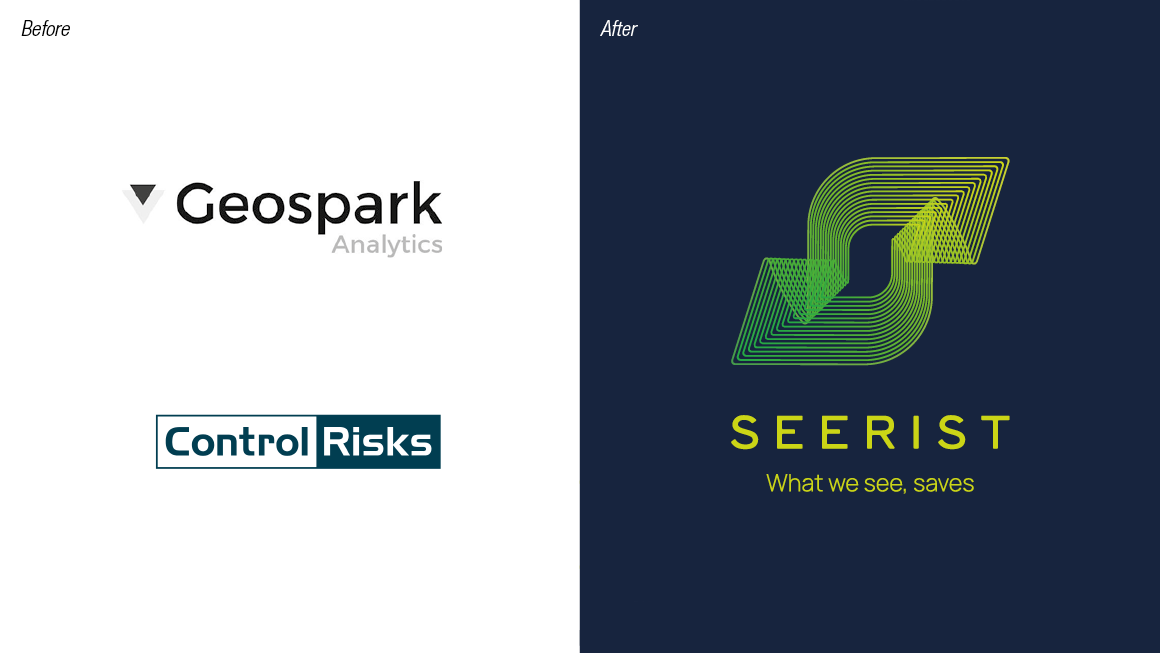
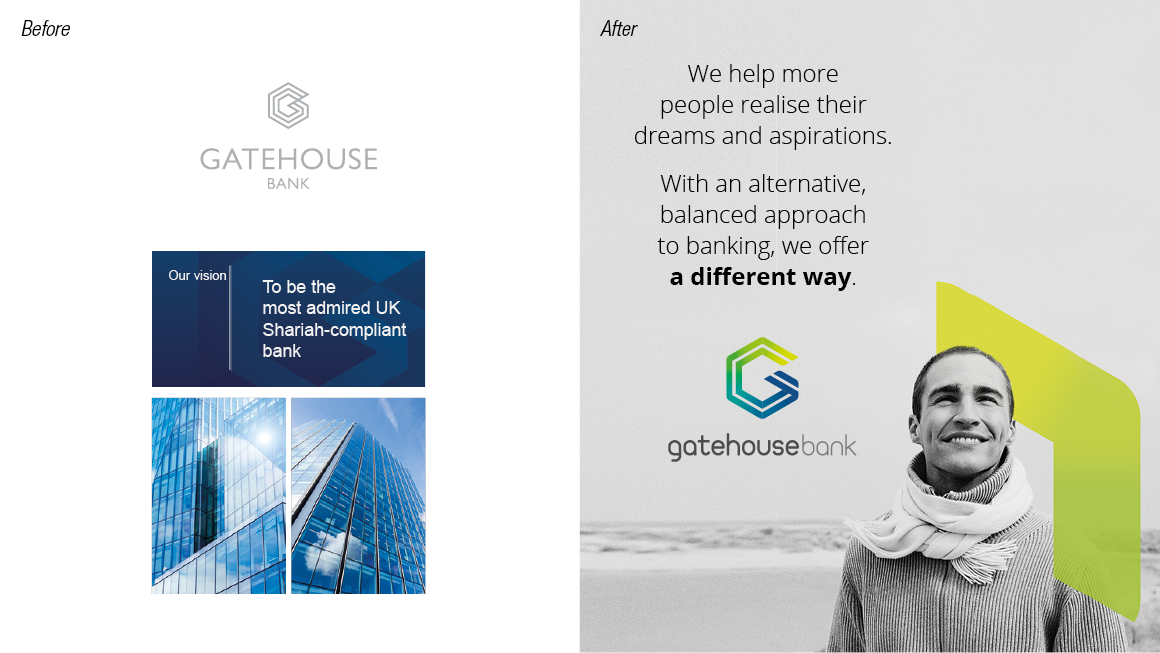
About Alastair
Alastair Williams
Founder & Creative Director